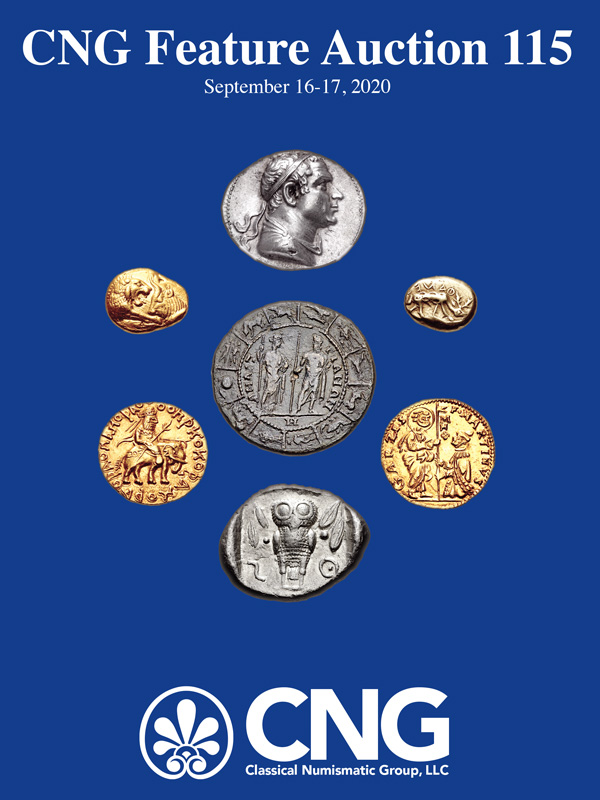
PREV ARTICLE
NEXT ARTICLE
FULL ISSUE
PREV FULL ISSUE
VOCABULARY TERM: MOLDED BORDERHappy 90th birthday (August 27th)! to Dick Johnson, who submitted this entry from his Encyclopedia of Coin and Medal Terminology. -Editor Molded Border. A border with many elements, of curves, arcs, angles and planes in one single design that continues around the entire circumference at the edge of a round coin or medal. Molded borders are made with a template and used with clay, wax or plasteline and are almost always made oversize; thus they are ideal for use on oversize patterns that are later pantographically reduced to cut the necessary die. A molded border is like any border in that it provides a frame for the design, forcing the viewers gaze inward to observe the device and lettering. In addition a molded border is ideal for large medals particularly in that it aids human beings to pick up and hold the piece with their fingers. The multiple elements of the border are, in effect, grip ridges where finger ridges (as in a fingerprint) lock and hold tight on the border ridges. The larger the medal, the more elements of these ridges should be designed into the border. Designing the molded border. After the design has been sketched on paper, the artist will get a feeling for the best way to frame his design. This will influence his choice of design elements for this frame – to actually shape the object's border. A simple design might require a simple border, say, a plain band. A more complex design will require a border of multiple elements, using a step border (with each level lower than the previous starting at the top rim). Thus the artist can design the border using as many artistic principles as he wishes. These include harmony, rhythm, symmetry, balance, proportion, dominance, contrast, subordination, variety and repetition. The artist chooses one or more of these with respect to the central design. Also to add interest the artist may include an element or two which may supplement the border, as a chain for a naval medal, a cable for an engineering medal, or foliage for a horticultural medal. These must be modeled separately just inside the molded border as they cannot be formed with the template. All this adds charm to the total piece. How molded borders are made. The sketch of the design might include a side sketch of the cross section view of the border elements. When this is approved, the artist begins his modeling. He will secure a large round board, perhaps two feet in diameter. In the exact center will be a hole with a six to eight-inch rod attached to the board. An arm will be mounted on top of the rod, which will swing around the entire circle on the rod. A template will be made in metal the exact shape of the border design in cross section and this will be attached to the end of the arm. A large roll of clay, wax or plasteline will be laid just inside the edge of the board. After it is pressed down so it adheres securely to the board the arm with the template is lowered into the roll of the modeling material. When the arm is rotated the template forms the design in the soft modeling material. By rotating the template it will leave a trail of perfectly shaped border. The unwanted material will be pushed ahead of the template and the modeler removes this. By use of his fingers, and moving the template around the center rod several times he will form a perfect multiple-element step border in proper size and shape in quick time. He can then remove the template, arm and rod (plug the center hole), then add molding material to the base board – forming his background plate. At this point he has a choice of casting a new background plate with just the border in plaster, or he can continue modeling on this form. There are excellent reasons to cast the border at this time. He can make two casts, one for each side of the coin or medal, this guarantees the border on both sides will be identical (the art principle of repetition). Also casting just the border design in plaster makes it somewhat permanent (and lessens the chance of distorting the soft material border when reaching over it to model something inside). He can then model the rest of the design, including the device, the lettering and such on this plaster background plate. It might take only an hour or two to do this to make the perfect multiple-element border. See modeling, plaster casting.
Looking for the meaning of a numismatic word, or the description of a term? Try the Newman Numismatic Portal's Numismatic Dictionary at: https://nnp.wustl.edu/library/dictionary Or if you would like a printed copy of the complete Encyclopedia, it is available. There are 1,854 terms, on 678 pages, in The Encyclopedia of Coin and Medal Technology. Even running two a week would require more than 19 years to publish them all. If you would like an advance draft of this vital reference work it may be obtained from the author for your check of $50 sent postpaid. Dick Johnson, 139 Thompson Drive, Torrington, CT 06790.

Wayne Homren, Editor The Numismatic Bibliomania Society is a non-profit organization promoting numismatic literature. See our web site at coinbooks.org. To submit items for publication in The E-Sylum, write to the Editor at this address: whomren@gmail.com To subscribe go to: https://my.binhost.com/lists/listinfo/esylum All Rights Reserved. NBS Home Page Contact the NBS webmaster 
|